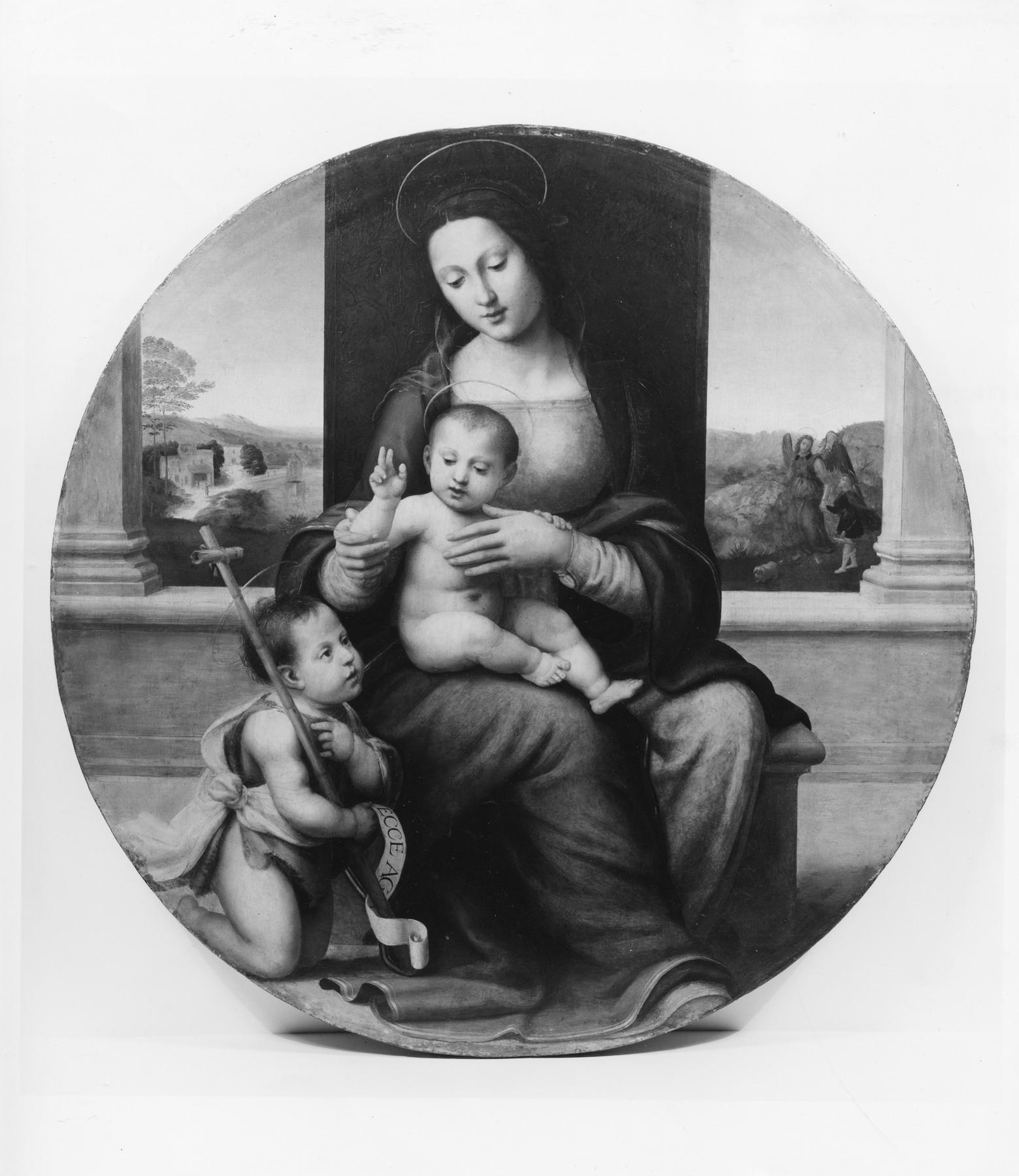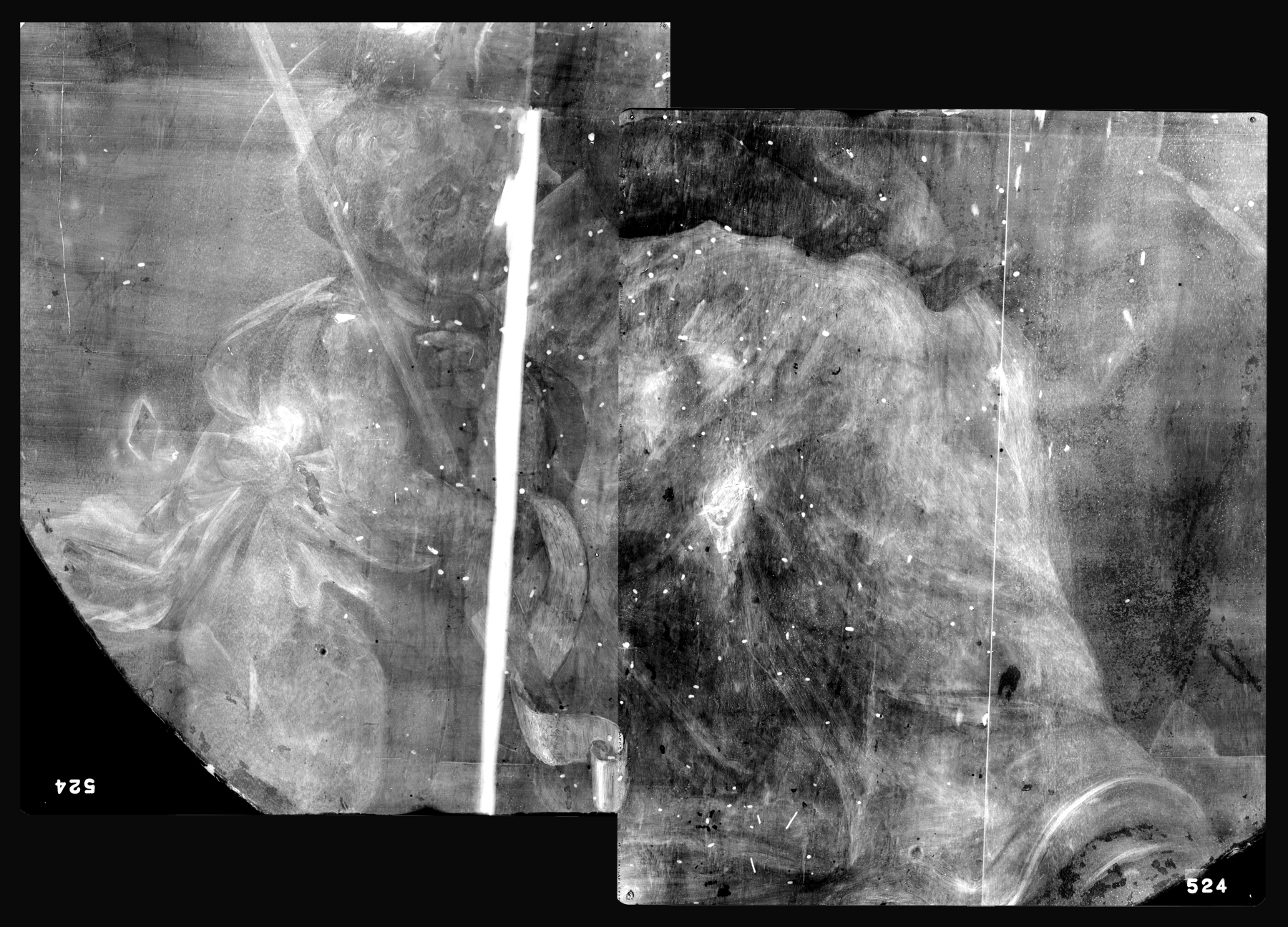Madonna and Child with Saint John the Baptist
(Renaissance Europe )
Tondi (circular paintings) were a popular decoration in the domestic interiors of Renaissance Florence. They were often commissioned to commemorate special events such as a marriage or the birth of the child. In this example, the Madonna is seated before a deep green cloth of honor with the Christ Child on her lap. She tenderly supports the child’s arm as he offers a gesture of blessing to his cousin John the Baptist, Florence’s patron saint. The Baptist holds a reed cross and scroll reading “Behold the Lamb of God” (“Ecce Agnus Dei,” in Latin), both references to his future ministries in the desert where he prophesized Christ’s future death and resurrection. The figures are shown within a loggia, or open-air porch, with a landscape beyond. In the landscape at the right is a tiny vignette of two Old Testament figures, the Archangel Raphael with Tobias, both commonly venerated during the Renaissance as protectors of travelers and against disease.
Sogliani has calculated his composition to compliment the circular shape of the panel. Note how the drapery around the Madonna’s feet carefully follows the curvature of the panel, or how her cloak wraps around her arms in rhythmic concentric folds. This emphasis on circular forms is contrasted by rectangular cloth of honor behind the figures as well as the pyramidal configuration of their bodies.
Sogliani’s works were esteemed by the artist and biographer Giorgio Vasari (1511-74) as “simple, gracious, and sweet.” Vasari also noted that Sogliani's works were particularly popular among 16th-century Florence’s most devout citizens. The popularity of the Walters composition is attested by two similar visions by Sogliani, both rectangular in format, now at the Royal Museum of Fine Arts in Brussels, Belgium, and the Galleria Sabauda in Turin, Italy.
Inscription
Provenance
Provenance (from the French provenir, 'to come from/forth') is the chronology of the ownership, custody, or location of a historical object. Learn more about provenance at the Walters.
Purchased by Duveen Brothers (through Harold Woodbury Parsons [1882-1967] as agent), 1917. Purchased by Henry Walters, Baltimore, prior to 1922; by bequest to Walters Art Museum, 1931.
Geographies
Italy, Florence (Place of Origin)
Measurements
Painted surface H: 37 15/16 x W: 37 1/2 x Approx. D: 1 1/4 in. (96.3 x 95.3 x 3.1 cm)
Credit Line
Acquired by Henry Walters, before 1922
Location in Museum
Not on view
Accession Number
In libraries, galleries, museums, and archives, an accession number is a unique identifier assigned to each object in the collection.
In libraries, galleries, museums, and archives, an accession number is a unique identifier assigned to each object in the collection.
37.524




